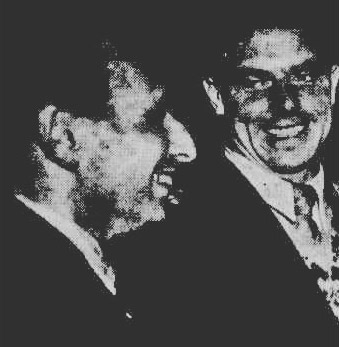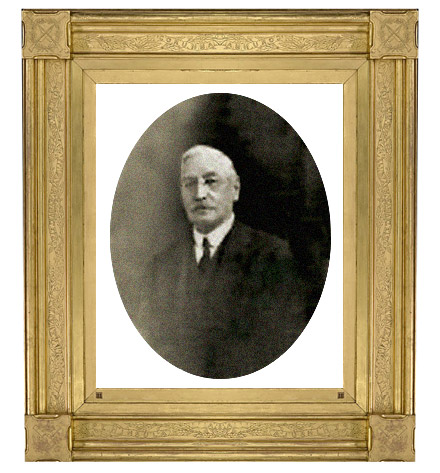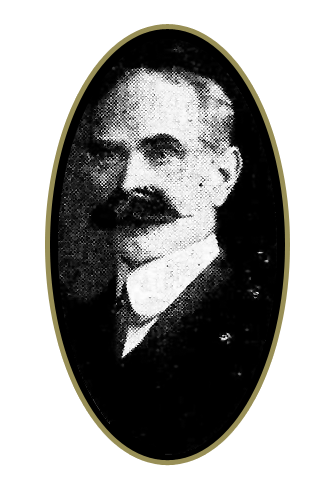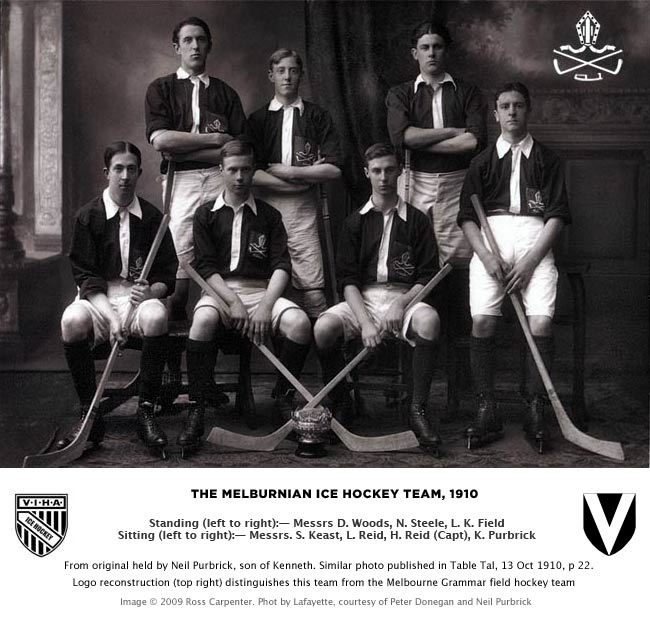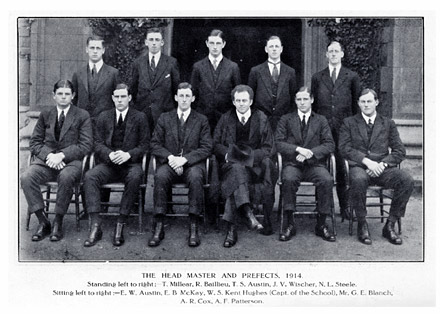Legends
home
1936 1st AUSTRALIAN Winter Olympian
1947 1st International Figure Skating GOLD Medallist
1960 1st Australian Olympic and World Championship ICE HOCKEY Teams Squaw Valley California USA
1961-2 2nd AUSTRALIAN Ice Hockey World Championship Ice Hockey Team Colorado USA
1963-4 2nd OLYMPIC Qualification ICE HOCKEY Team Tokyo Japan
1987 1st International Ice Hockey MEDAL Perth Australia
2008 Ice hockey World Championship PROMOTION TO DIVISION I Newcastle Australia
Kurt DEFRIS AM
(1910 - 1983)
BORN IN VIENNA IN 1910, Kurt Defris was an engineer who developed a fanatical interest in sport. He first played outside right at the age of 14 for the juniors of the Vienna Association Football Club alongside Max Gold, who later managed Rapid Vienna on its tour of Australia in 1955. Defris also played with Gold on several thrilling occasions for the world-renowned professional Hakoah Wien in first division soccer. [603] This Club was formed in 1909 and became the most successful and famous Jewish multi-sports club in Europe. "Hakoah" is Hebrew for "the strength" and the club was dedicated to the philosophy of Muscular Judaism.
After four years with the highly-ranked Fair Unitas Academic Club, Defris was elected by five hundred clubs to represent them on the Austrian Football Association. He also played table tennis for the Fair Unitas Club, home of seven-time world champion Richard Bergman. However, in this sport, he had to play second fiddle to his wife, Steffie, who at one time was ranked third in the world of women players! For two years, he managed the Austrian national amateur soccer and table tennis teams on their tours of France, Czechoslovakia and Hungary. He was nearing the top of the tree as a sports administrator in his homeland. [603]
As Vienna fell under Nazi control, Defris and Steffie escaped to China by devious means. Japan had occupied the Chinese sections of Shanghai but not the International Settlement or the French Concession. They lived at No 1810 Avenue Joffre (now Middle Huaihai Road), [606] one of the major commercial streets in the French Concession, until the Japanese invaded it in December 1941, soon after they attacked Pearl Harbour. Then they were required to live in the Shanghai gehetto, where a thriving "Little Vienna" soon sprang up, centered around the Broadway Theatre and Ohel Moshe Synagogue, now the Jewish Refugees Museum. They lived a peaceful life recreating some aspects of Viennese culture. Defris was prominent in the Jewish Recreation Club (JRC) and brought the Hakoah ethos to bear on this organisation. [599]
He immediately set about the successful organisation of a special Jewish athletic competition involving 60 football teams and more than 200 table tennis teams in Shanghai, with sections for boxing and swimming. [603] Table tennis was enormously popular there and easy to organise. The Defris were among the several star table tennis players who emerged from the Shanghai Ghetto including George Kapel (Kanzepolsky), captain of the Betar team, who became undefeated champion of Shanghai at age fifteen. [599]
The Shanghai Soccer League's first division featured a number of national teams that were famous in the East — the Russian Sokol, the British East Surreys, the Portugese Luisitano, the French ASF, the Japanese Tung Wen and the Chinese Tung Hwa. Defris played his usual position for the Jewish Recreation Club and was elected president of the International Table Tennis Association of Shanghai, which boasted over 10,000 registered players. He was the only non-Chinese national in the association and his sporting and administrative powers were at their peak. The influential positions he held with the virile sporting sections of Shanghai's population drew the attention of the Japanese Occupational Force. In their eyes, he was little more than a refugee from the western end of the East-West Axis, and promptly stripped of all appointments for the duration of the war. [603]
He and his wife survived the Japanese occupation and as soon as war ended all the clubs of Shanghai Soccer League unanimously appointed him a Selector covering all the league's foreign teams. The Chinese government enticed him with an offer of citizenship to stay and organise all amateur sport in Shanghai, but he was longing to see his family again. [603] In September 1946, the couple made their way to Hong Kong and boarded the ship Yochow to Melbourne, where Defris' parents and sister had emigrated earlier that year. [604]
In Melbourne, Defris instituted a JRC in memory of Shanghai. He won many Victorian table tennis premierships and was instrumental in improving the standard of the game in Australia, a testament to the quality of sport in Shanghai and the impression playing sport had on the members of the community there. He first saw the Melbourne Hakoah Soccer Club play at Preston. Only eight players assembled but Nat Spicer, Hakoah's manager, and thirteen spectators were persuaded to dress and eventually all twenty-two took to the field. The brand of soccer played that day made Defris shake his head with mirth. [603] The club had been founded in 1927 based at Middle Park, and within a decade it was one of the leading sides in the Victorian First Division. It was the first successful non-Anglo migrant backed club in the state, laying the foundation for the dominance of other migrant run clubs after World War II.
Defris is credited with reinventing the Club from the time it was run by Melbourne businessman Jack Skolnik, who was its president in the 1950s, and an early driving force. Defris became club secretary for many decades but characteristically shrugged off the credit, bestowing it instead on stalwarts like Skolnik, Tony Rubinstein and other committee-men. While the club was unable to win a league title post-war, it still managed several victories in the Dockerty Cup, including four consecutive titles in the 1950s. Gradually, the club's supporter base dwindled due to assimilation and lack of renewal from younger supporters, and it eventually merged with South Melbourne's Victorian league reserve side in the early 1980s. Defris was appointed to the Victorian Soccer Council in 1953 and became a State Selector, a member of the League Management Committee, the Disciplinary Committee and Acting Treasurer of the Council.
Back in Austria, Hakoah Wien had re-formed in 1945, though its football team was disbanded in 1949. On the occasion of the 45th anniversary of Vienna Hakoah in 1954, Defris sent a message of greeting to Vienna from his new home in Melbourne. The strength of the bond to the "Wiener Original" of the Melbourne Club is evident in his message [roughly translated from the original German]. "Hakoah Sports Club Melbourne welcomes and congratulates the Mother Club and founder of Jewish sports movement for the 45th anniversary of existence. Those members of the local clubs who are sports fans from Europe, domiciled in their newly adopted country Australia, have cause to remember the happy hours provided by the numerous sections of Hakoah Vienna sports club. Hakoah Melbourne had adopted the glorious name of the great founder of the Jewish sports movement in distant Australia and continues its tradition. The Hakoah members in Melbourne celebrate the many Jewish Athletes of your club". [602]
In 1955, he was the first ‘New Australian’ to manage the Victorian Soccer and Australian Soccer (Socceroos) test teams. His association with ice hockey also began that year as manager of the newly formed Arkana IHC based at Melbourne Glaciarium and vice-president of the Victorian Ice Hockey Association (VIHA), later succeeding Bud McEachern as president for seventeen years. Jack Skolnik, Hakoah Soccer Club's president, was also president of the powerful Raiders IHC and their combined presence in the sport that year led to the club becoming Raiders-Hakoah, then merging in 1956 with Arkana, to be known simply as Hakoah by 1957. The club went on to win back-to-back VIHA Championships in 1963 and 1964. They won again in 1971, 1974 and then 1980 for the last time under the captaincy of Eric Theobald whose sons and grandchildren were still active in the sport over three decades later.
In addition to these five VIHA trophies, Hakoah were also National Champions in 1963 and 1974. They were the underdogs in the National against Glebe Lions (NSW) coached by Australia's first Winter Olympian, Ken Kennedy. Glebe had two former Swedish national team players, and players from Switzerland, Finland and Germany. Hakoah had Australian-born Johnnie Thomas, Johnnie O'Brien and Kevin Harris, with Swiss centre, Albert Studer. In 1983, Hakoah merged with the Lions IHC, which had formed four years earlier, to become Hakoah-Lions for one season, then the Rebels IHC for three seasons until they resumed as Hakoah in 1987. When Hakoah became Melbourne Jets in 1995, the club won the VIHA championship in its inaugural season.
Defris ran the Melbourne Hakoah Table Tennis Club and became vice-president of the Victorian Table Tennis Association. He held senior positions in the Victorian Soccer Federation, became an official for the Olympic Games in Melbourne in 1956, and helped organize the nation's first Olympic football (soccer) competition. In fact, his whole week was devoted to sport. Every night he would attend a committee meeting, watch a sporting event or one of his teams in training. He helped several Jewish sporting clubs secure playing fields in Albert Park by becoming a member of the Albert Park Trust, among them Ajax Cricket Club, on the proviso that their name was changed to Hakoah-Ajax CC. His Order of Australia, awarded in 1976 for services to sport, was richly deserved for a man who devoted his life to Maccabi sport and the many organizations that could be of assistance to the wider Ajax-Maccabi movement.
Defris is considered the founding father of the Hakoah movement in Australia although the club preceded him here by several decades. His memory is perpetuated with an annual trophy awarded in his name by Ice Hockey Australia, but also by numerous other sporting clubs including Maccabi Hockey Club, Maccabi Victoria Junior AFL, Maccabi Ajax Cricket Club, Ajax Football Club, and Ajax Junior Football Club. He was awarded Life Membership with Football Federation of Victoria, Ice Hockey Victoria, and Table Tennis Centre of Victoria.
He was made Honourary Life President of the VIHA after his retirement. He was a long-serving member of the Victorian Amateur Soccer Football Association and its successor, the Victorian Soccer Federation; foundation president of Maccabi Basketball Victoria in 1951; holder of senior positions in the Victorian Soccer Federation; and vice-president of the Victorian Table Tennis Association. He was inducted to the Maccabi Victoria Hall of Fame in 2000, and made a Legend in 2011. Today, Maccabi Victoria is the largest Jewish organisation in Australia with 23 clubs and over 4,200 members.
This year marks the diamond jubilee of the beginning of Kurt Defris' involvement in ice hockey here, the year Raiders-Hakoah were born. He hated to sit in judgement and so, of all his duties, he only disliked serving on disciplinary committees. He liked everybody and was enormously popular. [603] His contribution as a builder and administrator of Victorian ice hockey from 1955, including VIHA president between 1962 and 1978, continued for almost three decades up until his death.
These were the years that Victorian ice hockey paid back its Olympic debts and consolidated its participation in international championships. His service was all the more extraordinary given the great diversity of his other sporting commitments and achievements. He died in March 1983 at Balaclava in Melbourne and was interred in the Jewish Memorial Cemetery of Springvale Botanical Cemetery. His wife Stephanie Maria was cremated there in July 1992.
Peter Ross SUTHERLAND
(1865 - 1943)
BORN AT DORNOCH in the Scottish Highlands on January 9th 1865 to parents John Sutherland and Christina Mann. [615] His father, born in 1786, fought with the Duke of Wellington against Napoleon at the age of 29, a soldier with the 78th (Highlanders) Regiment of Foot, the Ross-shire Buffs Highlanders, at the Battle of Quatre Bras on 16 June 1815, two days prior to the decisive Battle of Waterloo. [608] Christina, the daughter of Hugh Mann and Elizabeth Sutherland, was just twenty-six years-old, thirty-three years his junior. His father was 79 years-old at the time of his birth. Sutherland grew up in Scotland and at sixteen lived at Old Machar, further south around the coast in the city of Aberdeen. [614]
In Australia, Peter Sutherland pursued his interest in mining and farming machinery. He became co-founder with John Brown Cameron of the well-known Ballarat machinery merchants, Cameron & Sutherland. Cameron had earlier established the business known today as Camerons, which still supplies plumbing, steel and welding products throughout the western and central regions of Victoria from stores at Ballarat, Bendigo and Stawell. [610] They started with a machinery yard located at 7 Lydiard Street North in Ballarat, before establishing extensive depots at Queen's Bridge Street and Riverside Avenue in South Melbourne, and also at Neutral Bay in Sydney.
In 1906, the year the Glaci first opened at today's South Gate, Sutherland's company advertised new and secondhand machinery of every description, boasting the largest stocks of mining machinery in Australia. Between 1922 and 1932, the company was known as Cameron Sutherland & Seward with a nominal capital of about £150,000 (about $12 million). It was eventually taken over by Freighters Limited.
It was on March 28th 1923 that the Melbourne Ice Skating & Refrigeration Co, owner of the Glaciarium, went into voluntary liquidation, paying a dividend of one hundred percent [617]. Originally established by the Reid family, most of whom had moved to Sydney, its demise was due to the failure of the basement cold storage operations, not the ice skating rink. It sustained a dramatic loss of revenue from £10,000 per annum to £1,500, equivalent to about half the Glaciarium's average annual profits of recent times. The refrigeration plant had been in use for seventeen years and required expensive maintenance and parts replacement, which may not have been carried out. The liquidators already had control of the rink complex, and they did not appear in court. [612]
That year, the first national association of Australian ice hockey was formed under the leadership of John Goodall and Sutherland's company purchased the Glaciarium property for £35,800 ($2.5m), or half its value, as a speculative venture. The original building, plant and machinery had reportedly cost £70,000 ($5m). The company liabilities at the time amounted to £38,000, and so it was sold by liquidators to break even, at a substantial loss compared to the original investment. A small syndicate was formed and skating continued for 3 seasons. Then the rink manager, Leo Molloy, formed the Victorian Ice Skating Co. [617] The directors had said publicly they did not intend to enter the ice rink business, but Sutherland was nonetheless president of the Victorian Ice Hockey Association (VIHA) from 1925, when Isidor Beaver, Cyril Macgillicuddy and Barney Allen were vice presidents. He was to lead the board of Glaciarium Ltd until shortly before his death eighteen years later.
That same year, he donated the Sutherland Cup for the VIHA Senior A-grade ice hockey premiership, aka the President's Cup. [608] This trophy continued for many seasons until after the Second World War when it was replaced by the H H Kleiner trophy.
On December 15th 1925, another proposed sale of the Glaciarium prompted the formation of a new ice rink committee at a meeting of ice sports enthusiasts at the former Playhouse theatre, nearby the Glaciarium in Aikman Street. They were in dire straits, their chief concern the imminent conversion of the Glaciarium to another form of entertainment, or an altogether different use. They had been promised £40,000 to £45,000 finance (about $3.25m) to build a new rink at a site in Toorak Road, South Yarra, over which they held an option. [612] At that time, John Goodall was still president of the newly formed National Ice Hockey and Speed Skating Council, Peter Sutherland was VIHA president, and William G Bannerman (1873– ) was VIHA secretary.
On September 23rd 1926, the Glaciarium was again sold, just as the Playhouse group had anticipated. This time it was purchased by the Metropolitan Gas Company for £45,000 ($3.2m), after it had been passed-in at auction some months earlier. They had paid 18 percent more than the "fire-sale" price three years earlier, publicly stating the purchase was for a future "sky-scraper" to accommodate their business. However, the lease of their seven-storey Flinders Street building still had fifteen years to run, [613] and skyscrapers were not permitted on the south bank of the Yarra River for many years to come. In fact, it was three decades later, in 1967, that the company moved-in to their new brown-brick, twin-towers over the railyards in Flinders Street. South Bank was still tower-less. Formerly the South Melbourne Gas Co, it became the Gas and Fuel Corporation after 1950, and its Flinders Street buildings were subsequently demolished during the Kennett government's term of office, to make way for Federation Square.
About three months after the purchase, rink manager Leo Molloy called tenders for repairs to the rink's roof and drainage system and painting of the interior and exterior. The Argus newspaper in Melbourne reported he had just formed a new ice skating company, to be known as Glaciarium Limited and obtained a five year lease of the Glaciarium from the Metropolitan Gas Company. Molloy was managing director and secretary of the new company for the period of the lease. The upgrade cost £12,000 ($1m) [10, 16]
The new rink planned by the Playhouse group was never built, nor was the proposed new ice plant installed in the leased building. Instead, the new publicly-listed Glaciarium Ltd, formed by Molloy with Sutherland as chairman of directors, purchased the Melbourne Glaciarium lock, stock and barrel from the gas company on February 8th, 1931, the final year of the lease. This was at the height of the Great Depression, and the purchase price was £45,000 ($3.7m). [10, 16] Harold Luxton, Lord Mayor of Melbourne and new chairman of directors of the gas company, had presided over it. Glaciarium Ltd made annual repayments to the Gas Co, and had reduced the debt to £16,900 (about $1m) by early-1943. [616]
From 1928, Sutherland was a director of Wings Ltd School of Aeronautics in Broken Hill and the Government nominee on the Metropolitan Fire Brigades Board, where he served as president from 1937. He became VIHA Patron in 1930, succeeded by Jack Goodall as VIHA president, with Alban De Long, secretary; Ken Fox, assistant secretary; and Ted Molony, treasurer. [608] In 1939, after a £20,000 ($1.5m) upgrade of the Glaciarium, the board consisting of Sutherland, Major Athol Wilson, Ted Molony, Barney Allen, and Cyril McGillicuddy valued the building at £80,000 ($6.2m). [617]
Sutherland remained chairman of Glaciarium Ltd until his death, and was succeeded by former ice hockey player and International Skating Union judge, Cyril MacGillicuddy. "We regret the death of Mr P R Sutherland, who has been chairman of the company since its inception," said McGillicuddy at the company meeting of May 5th, 1943. "Mr Sutherland always had the interests of the shareholders at heart, and his place as chairman and director will be hard to fill." [616]
Sutherland had married Ellen Marion (Nellie) Coulter of Edeyrn, Mair Street, Ballarat, on February 5th 1910 at Christ Church Cathedral Ballarat. The daughter of Irvine Coulter (Apr 21 1844 - 1922) and Welsh-born Mary Jones, she had matriculated at Melbourne University in 1892 through Clarendon College Ballarat. She had lost three brothers who distinguished themselves in the Great War — Major Leslie Coulter DSO, acting in command of the Miners' Corps in France; Sergeant Jason Coulter in defence of Courtney's Point at Gallipoli; and Lieutenant Sydney Coulter at the battle of Ries Viel in the Boer War in 1901. A fourth survived, Lieutenant-Colonel Graham Coulter DSO, commanding officer of 8th Battalion at ANZAC and in France.
The local ice sports community in Victoria had the Reid family to thank for their first rink. But, following its financial collapse, Peter Ross Sutherland played a decisive role in preventing it from becoming their Waterloo. He helped give them control over the expensive ice rink and cold stores, successfully guiding its business operations over the eighteen years between 1925 and 1943, which largely paid for the facility. [616] He also played an active role in the administration of the Victorian Ice Hockey Association as president during the five-year transition, and later as patron. He died at Brighton Beach in Melbourne on January 26th 1943, age 78, survived by his wife, Nellie. [608] There is a memorial at Boyd Chapel in the Springvale Botanical Cemetery, Melbourne. Nellie was interred there in July 1955.
Philip John Rupert Steele Sr
(~1850 - 1926)
STEELE EMIGRATED FROM IRELAND IN 1868 and lived most of his life in South Melbourne. He was the second president of the Victorian Ice Hockey Association from 1911 until some time after the Great War. In 1914, Winner sports writer Algie Tause wrote, "the game had made great strides since the Victorian association was formed in 1908... and the sport in Victoria owes much to Mr Philip J Steele, the president of the Ice Hockey Association... his term has witnessed an extraordinary growth in the popularity of the game". [15]In Melbourne, he found work in the furniture departments of big stores, mainly Buckley and Nunn in Bourke Street, owned by an uncle of H Newman Reid, developer of Melbourne Glaciarium. [2] In 1889 he established Steele and Co, complete house furnishers. His store was at 195-201 Swanston St, west side, midway between Bourke and Little Bourke, on the site later occupied by Swanston Hotel.
A keen cyclist and rower in his youth, he competed in the Henley Regattas of the 1870s on the River Thames in London. In August 1874, he was invited by the Melbourne Regatta Committee to participate in the International Race in Sydney. He won the maiden sculls that year at the Melbourne Amateur Regatta, today's Australian Henley Regatta, and the senior sculls at the Barwon Regatta, Geelong in 1876. [2] In 1884, he was presented with the "Kindred Sports and Associations" prize of the Victoria Cyclists Club at a dinner for the president, Sir Hartley Williams. Many years later on June 10th 1907, he was invited to a banquet at the Trocadero Restaurant at Piccadilly Circus in London to honour Sir Thomas Bent, "Prime Minister of Victoria". [2] Bent was knighted the following year.
His brother, Harry, also won many sculling races and both were active in much of the sporting life of South Melbourne. [3] Harry was closely associated with South Melbourne Cricket Club in its early years and he owned, trained, and drove many champion trotters, including Never Mind, Australian Trotting Cup winner in 1896. He was a member of the Victoria Racing Club (VRC), the Melbourne Racing Club, formerly the Victoria Amateur Turf Club (VATC), and Melbourne Cricket Club (MCC), and the holder of No 1 ticket for VRC and the VATC for many years. He had also managed the Melbourne Gun Club and Melbourne Athletic Club. [4]
Steele married Johanna Albertine Ekman in 1884 [6] and they had four sons at Normanhurst in Denmark Street, Kew. Albertine, the daughter of Carl Andersson Ekman and his wife Johanna, was born on the 25th September 1852 at Kristinehamn in Sweden by the shores of lake Vanern. [5] She came to Victoria in 1854, a relative of Reinhold Ekman who established R A Ekman and Sons of Victoria Street, West Melbourne, manufacturer and importer of household items. Reinhold also owned the North Melbourne Coffee Palace and a furniture warehouse at 22 Lonsdale Street between Elizabeth and Swanston, opposite St Francis Church. It later became part of Myer.
All four sons were educated at Melbourne Grammar School. Red-haired Norman (Norman Leslie) was born in 1896 and was captain of Rusden House at Melbourne Grammar, 1904-15. He was a Prefect and member of the XVIII football, VIII rowing, Rifle and Athletics teams. He was Captain of the XI when it made the world record score of 961 against Geelong College. Like his teammate, Leslie Reid, he joined Melburnians IHC, then left school at the end of Term 1 in 1915 and joined the Flying School at Point Cook. He gained his wings in the Australian Flying Corps and was commissioned in Egypt in October 1916. He served with Reid in 2 Squadron, then 1 Squadron, promoted to Second Lieutenant.
Fred was killed while leading an attack at Neuve Chapelle on October 26, 1914. He was twice mentioned in despatches by Sir John French for distinguished service, the first MCC Member to lose his life in the War. He has no known grave but his name is commemorated on Le Touret Memorial, France. The second brother, Rupert, had been twelve months on active service when he was hit by shrapnel in sixteen places on November 15, 1916 [6, 7] and died in the 2nd British Red Cross Hospital at Rouen in France on January 8th 1917. His brother, Cyril, was with him at his death, inseparable since they were small boys, [7] until he was buried in the St Sever Cemetery at Rouen.
The third brother, Norman, died of wounds as a German prisoner after his Martinsyde aircraft was shot down and crashed behind Turkish lines at Hareira in Palestine on April 20, 1917. One account said he was found by the enemy trying to write a letter, but died from a fatal shrapnel wound in his side. Another says his charred remains were found and buried one month later by the Australian Light Horse after the enemy had vacated. [12] His name is commemorated on the Jerusalem Memorial. Cyril, the only survivor of the four, was recalled to Australia from his course at St John's Wood Cadet School to be with his family following the death of his third brother and assist his father in running the family business.
The surviving son, Cyril, became managing director of Steele and Co, married Doris Ellen Duckett, and raised two children in Malvern. [6, 8] He died with his chauffeur, Arthur Jackson, in a speedboat tragedy on Port Phillip Bay in 1939. He had set-off in his $75,000 boat to wave farewell to his niece who was a passenger on a liner for the East. After a long search, his body was found near the mouth of the Werribee River. [9] Cyril was 47 years-old, survived by his wife and two children. The directors of Steele and Co Ltd were still producing record turnovers and modernizing their Swanston Street store years later. They had been with the company since the days of its founder. [12]
Steele eventually retired from sporting circles, but he was ever generous when appeals were made to him by sporting clubs. He died on April 17th 1926 [3] survived by his wife, Albertine, and one son and his daughter. On Armistice Day 1928, the survivors reconstructed the area known as the Wilderness at Melbourne Grammar, renaming it the Steele Memorial Ground to commemorate the loss of the three Steele boys, at the special place where all four brothers had each made their mark. The family also erected a copper tablet in St Paul's Cathedral Melbourne in their memory.
Article | The Tablet at St Paul's: The Second President of the VIHA
© 2007 - 2015 Ross Carpenter B Arch (RMIT) M Des (Urban Design) ARAIA.
All Rights Reserved. Original Research Nov 2007.
Reproduction prohibited without prior written permission of the author except for the inclusion of brief quotations in a review.
